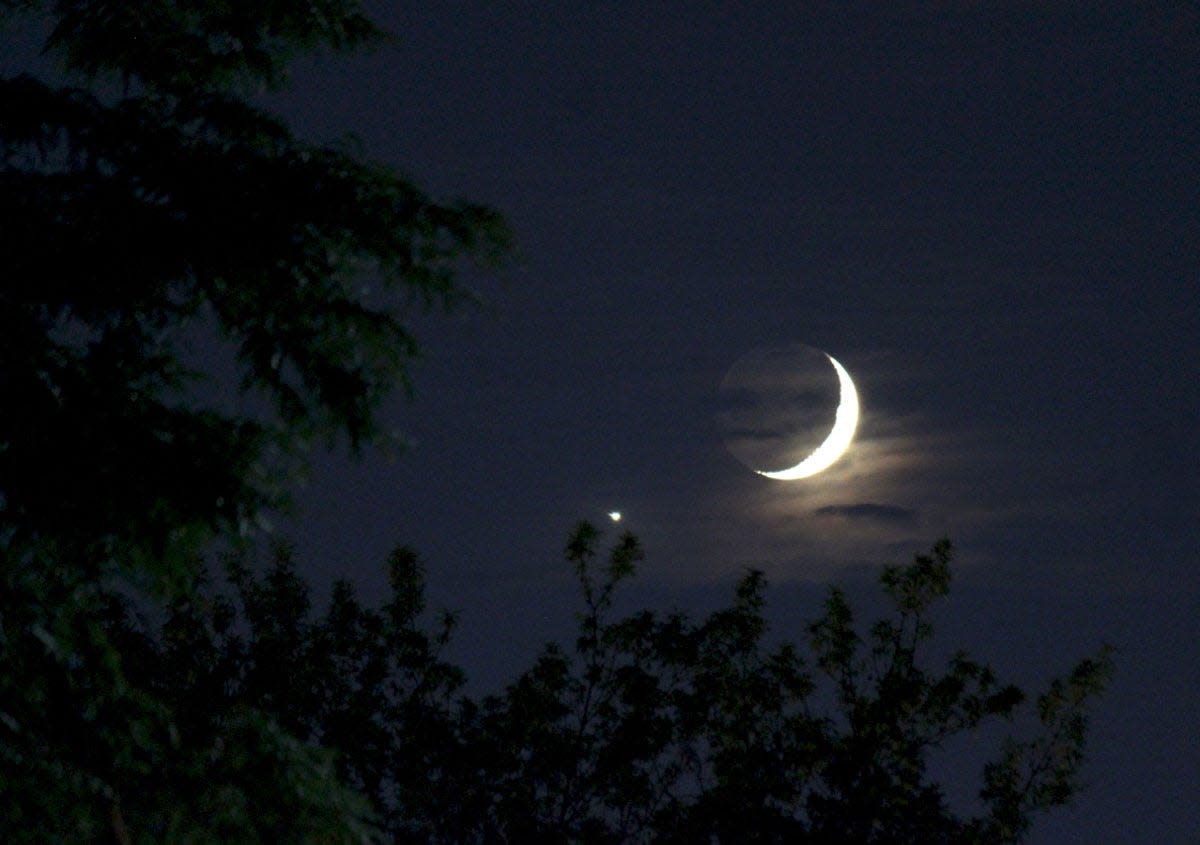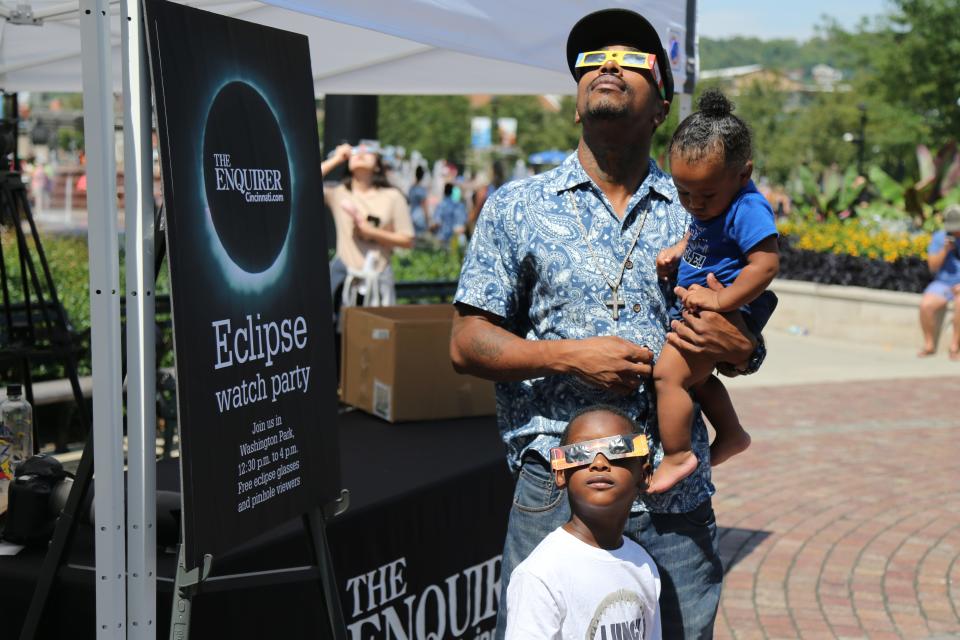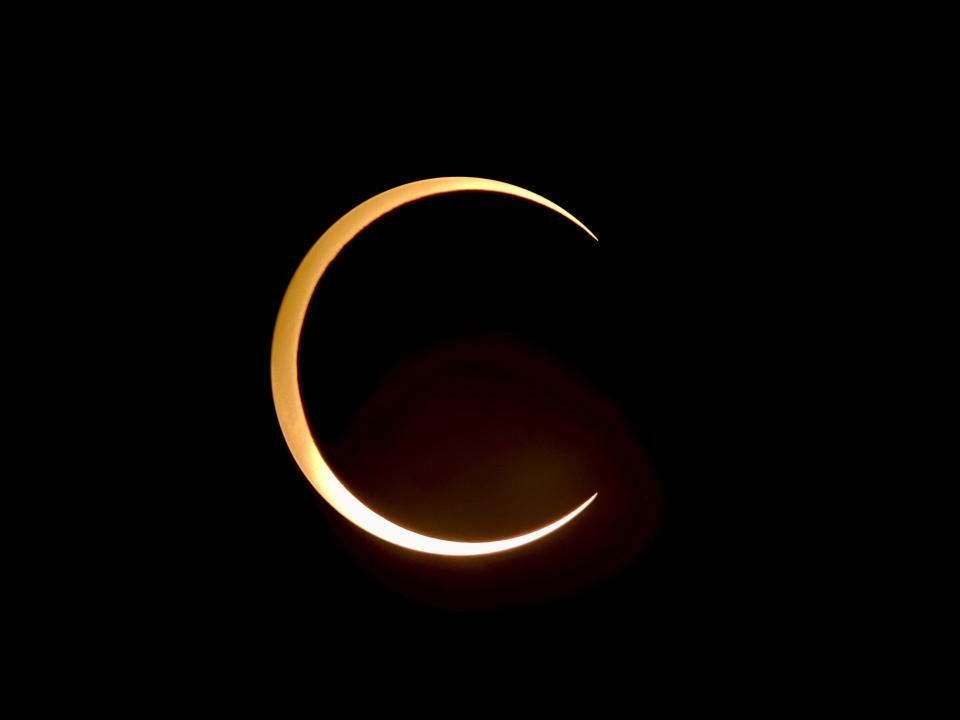Prepare to have your mind blown! The most jaw-dropping astronomy events coming up in 2024

April 8, 2024, will bring the greatest astronomical show in the universe when a total solar eclipse crosses the country. But what else can round out your year in exploring outer space? Let’s look at the can’t-miss astronomical events coming in 2024.
Moon-planet pairings early in 2024
When you see a suspiciously bright star near the moon at night, chances are it’s a planet. And we’ll have several moon-planet pairings early in the new year. Before sunrise on Jan. 8, look for the crescent moon hanging low in the southeastern sky. Dazzlingly bright Venus will be to the moon’s left and the red supergiant star Antares will almost seem to touch the moon. Later that morning, after the sun rises, the moon will occult (or pass in front of Antares and block its light) for about an hour.
In the evening skies, look for the moon to hang near the ringed planet Saturn on Jan. 14 and near brilliant Jupiter on Jan. 18.
Occasionally, planets appear near each other. These planetary conjunctions are much rarer and often tough to see. But you can look for Venus next to the much dimmer and redder planet Mars in the predawn skies Feb. 21, 22, and 23. Then Saturn and Mars come together low in the southeastern sky before sunrise on April 10 and 11.
April 8: Total solar eclipse (the big one)
But let’s get to the real astronomical highlight of 2024 – and perhaps the entire decade. On April 8, 2024, the moon will slide in front of the sun and block it out. The sky will get darker, some of the stars will be visible in the daytime, the temperature will drop, and the animals will think it’s nighttime. This is a total solar eclipse, and it is something you absolutely cannot miss.
Although a partial eclipse will be visible across almost the entire country, you have to be in the right place at the right time to see the total solar eclipse. This narrow path of totality extends from Mexico, Texas, Arkansas, Missouri, Illinois, Indiana, Ohio, New York, New England and into northeastern Canada.

For a detailed, interactive eclipse map, go to: bit.ly/2024eclipsemap.
Major cities like Dallas, Indianapolis and Cleveland will experience totality. Cities like San Antonio, Cincinnati and Columbus lie just outside the path and will have 98-99% of the sun blocked.
Although 99% eclipsed sounds good, it is not enough. You must experience 100% totality. It’s not too early to start making plans. Take off work or school and get yourself to totality. The view of the totally eclipsed sun is life-changing!
Two non-events
In addition to the total solar eclipse on April 8, we will have three other eclipses. However, two of them will not be easy to see. The first is a penumbral lunar eclipse on March 24. This happens when the moon slides into Earth’s fainter shadow (called the penumbra). This shadow does not significantly dim the light of the moon so, most likely you won’t notice any eclipse at all.

On Oct. 2, there will be a partial solar eclipse, but viewers in the United States will not be able to see it. This eclipse will only be visible from the South Pacific Ocean, South America and Antarctica. However, in parts of Chile and Argentina, skywatchers can see an annular or ring of fire solar eclipse that day. That’s when the moon is too far from the Earth and can’t block out the entire sun.
September and October moons
The night of Sept. 17-18 we will have the teeniest partial lunar eclipse. The moon will have just a sliver of its light blocked by the Earth – only about 8%. It still will be an amazing sight as you can watch the Earth’s shadow seem to take a tiny bite out of the moon.
Oct. 16-17 will be the supermoon – the closest full moon to Earth. Look for the moon rising in the east just as the sun sets in the west. The moon should appear slightly larger than normal. That night around midnight, the full moon will be at its closest point, about 218,500 miles from you. Check it out and see if you can tell the difference.
Dean Regas is an astronomer and author of six books including 1000 Facts About Space and How to Teach Grown-Ups About Pluto and host of the popular astronomy podcast Looking Up with Dean Regas. He can be reached at www.astrodean.com
Intro to Astronomy: Online Classes for Beginners
What: Explore the moon, stars and planets from your home with astronomer Dean Regas. Learn more about the entire universe, get tips on stargazing, and be prepared for the greatest astronomical events of the year. Classes are recorded so you can take them live or watch them later.
When: Wednesday, Jan. 3 and 10 at 7 p.m.
Tickets: $20 per household at astrodean.com/shop.
This article originally appeared on Cincinnati Enquirer: The most jaw-dropping astronomy events coming up in 2024

